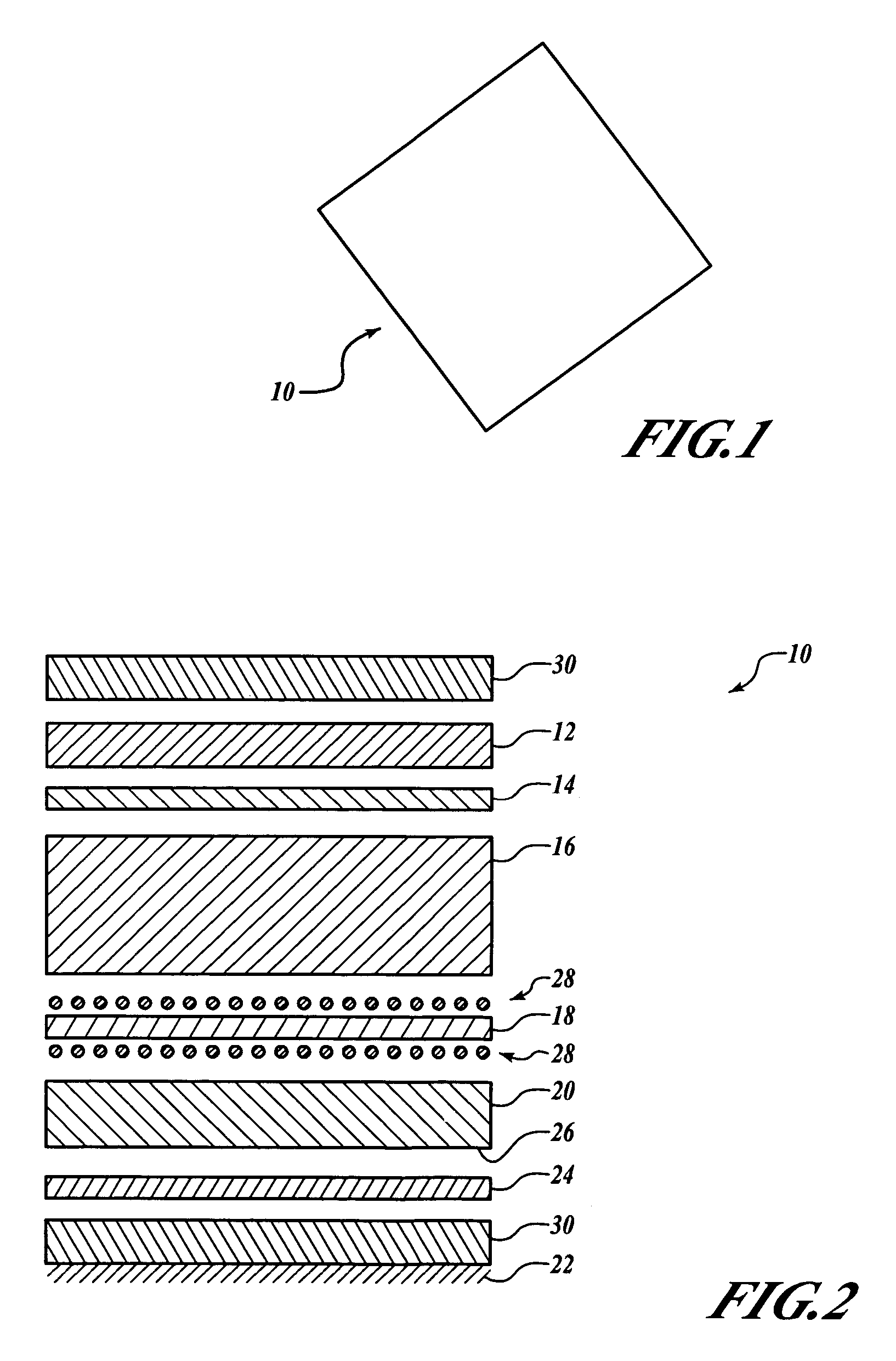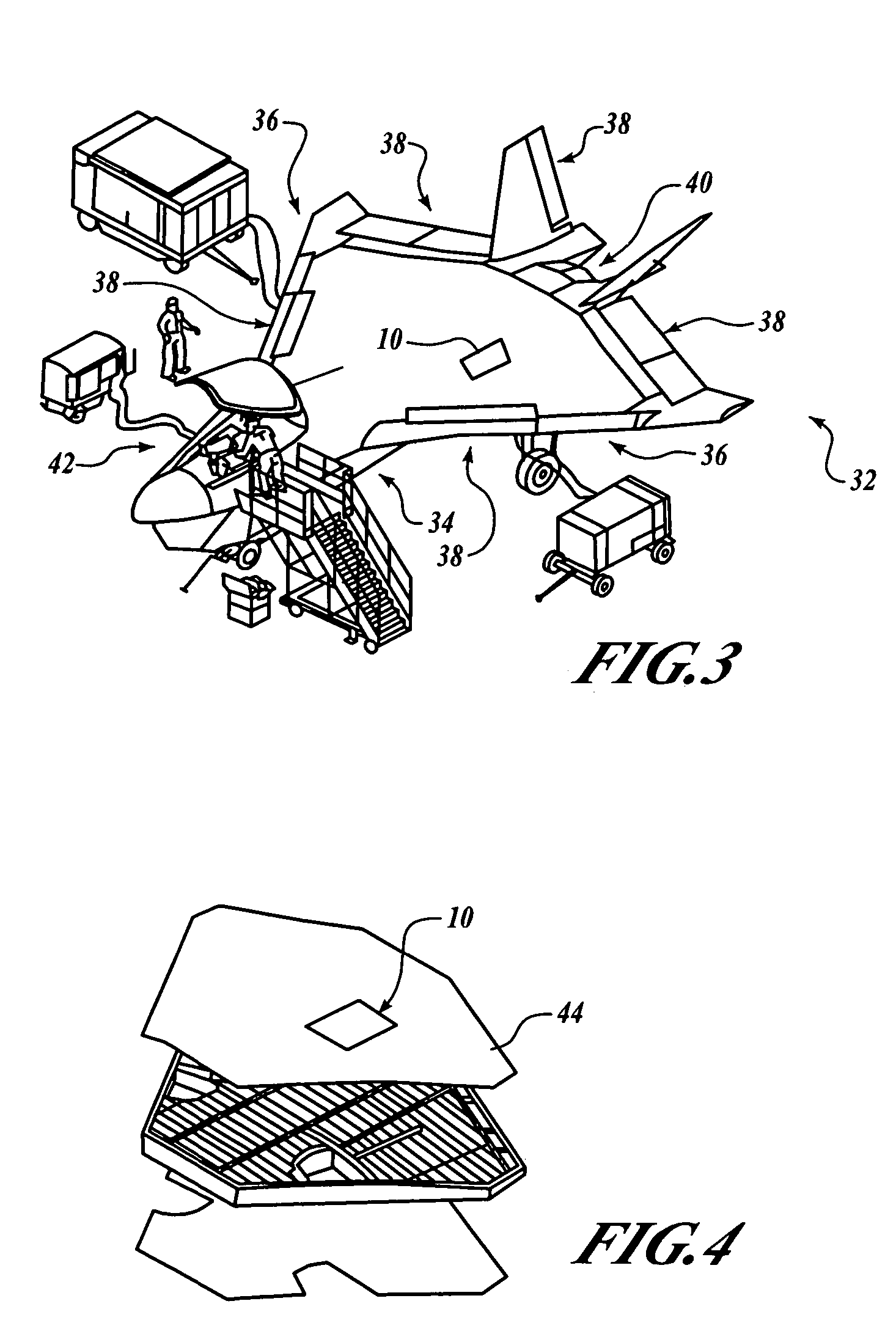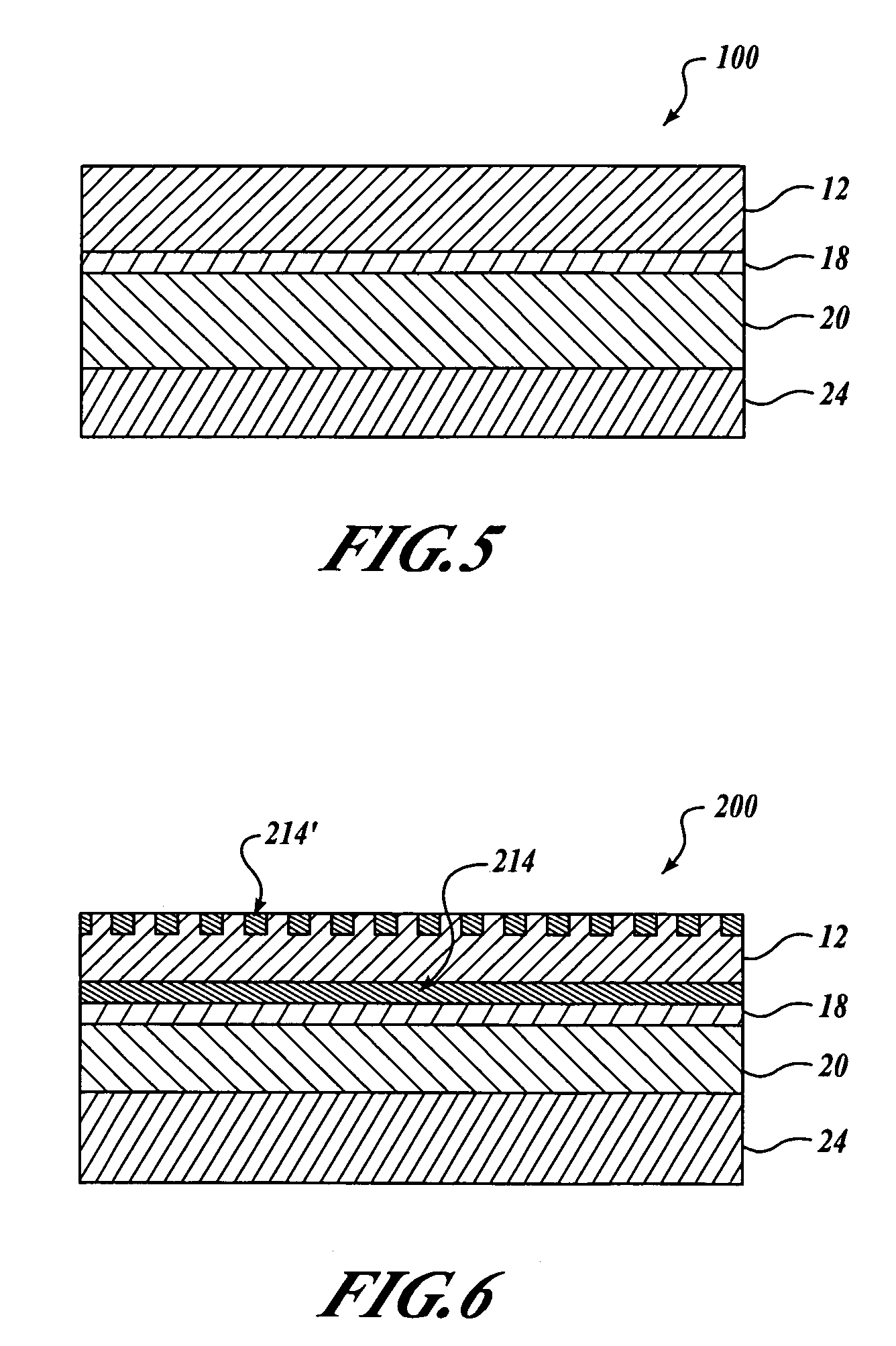Wide area lightning diverter overlay
a wide-area, lightning shield technology, applied in the field of appliques, can solve the problems of painting falling under closer environmental scrutiny, isolated damage may require the repair of a large area, and painted coatings are also vulnerable to damage, so as to reduce sparking and explosion hazards, reduce induced currents, and reduce antenna integration problems
- Summary
- Abstract
- Description
- Claims
- Application Information
AI Technical Summary
Benefits of technology
Problems solved by technology
Method used
Image
Examples
Embodiment Construction
[0044]By way of overview and referring to FIGS. 1 and 2, according to a non-limiting embodiment of the present invention, an appliqué coating 10 is provided for a substrate 22. The appliqué coating 10 includes a polymer film 12 arranged as an outer layer or topcoat and a vapor barrier film 18 made of metal foil. A pressure-sensitive adhesive 24 is arranged as another outer layer for adhesive attachment to the substrate 22. A polymer film 20 is disposed between the vapor barrier film 18 and the pressure-sensitive adhesive 24. FIG. 2 may not be drawn to scale in order to emphasize features that may enhance understanding of the present invention. Details will first be explained regarding exemplary components of the appliqué10, followed by explanations of preferred and alternate implementations of appliqués according to exemplary embodiments of the present invention.
[0045]A polymer film 12 provides an external film or topcoat. The polymer film 12 is typically an organic resin matrix ela...
PUM
| Property | Measurement | Unit |
|---|---|---|
| total thickness | aaaaa | aaaaa |
| diameters | aaaaa | aaaaa |
| thick | aaaaa | aaaaa |
Abstract
Description
Claims
Application Information
 Login to View More
Login to View More - R&D
- Intellectual Property
- Life Sciences
- Materials
- Tech Scout
- Unparalleled Data Quality
- Higher Quality Content
- 60% Fewer Hallucinations
Browse by: Latest US Patents, China's latest patents, Technical Efficacy Thesaurus, Application Domain, Technology Topic, Popular Technical Reports.
© 2025 PatSnap. All rights reserved.Legal|Privacy policy|Modern Slavery Act Transparency Statement|Sitemap|About US| Contact US: help@patsnap.com



